Altitude training for cyclists: does it work and could you benefit? (video)
Breathing air with less oxygen stimulates physiological changes that can boost performance, but for amateur cyclists, is it really worth the time, effort and money?
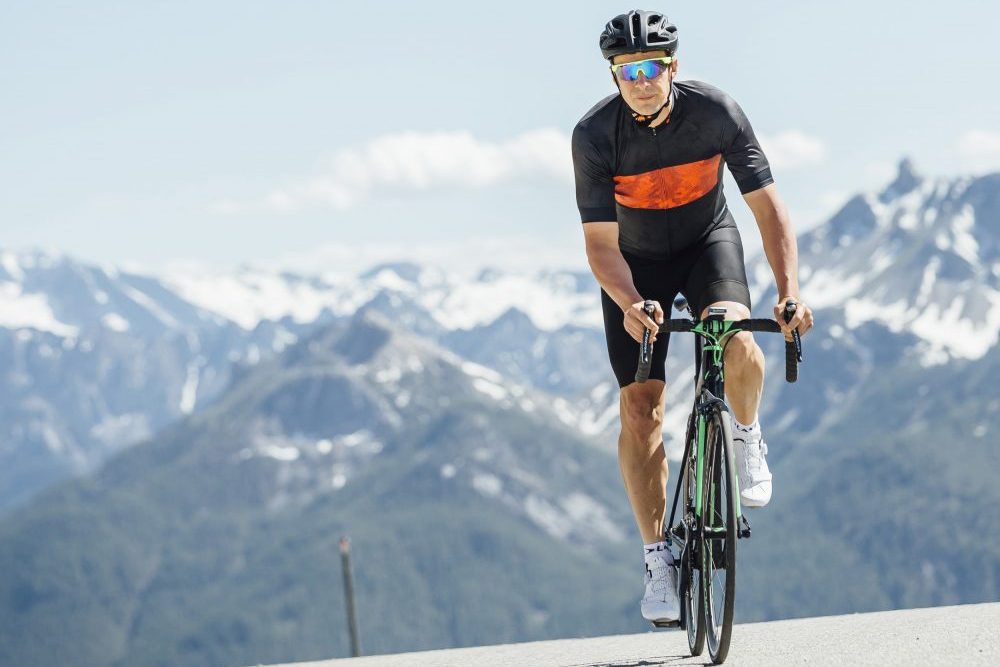
Your lungs are burning, heart pounding, breathing rate frantic — and this is just your local climb. The thought of riding up actual mountains 1,000 or more metres higher than your nemesis British hill may seem daunting. As you climb to 1,000m and beyond, the air begins to get thinner, with noticeable effects on performance.
Pros train specifically to deal with these conditions, but does a regular UK amateur rider really need to bother with altitude training?
To answer that question, first we need to understand what is happening in the body while at altitude. Less oxygen is available, and so the cardiovascular system adapts to become more efficient.
“One of the first adaptations the body goes through is an increase in red blood cell production,” explains James Barber, performance specialist at the Altitude Centre in London.
“This means you can carry more oxygen in the blood, keeping up the supply from your lungs to your muscles. This is the main goal of altitude training.”
>>> Five tips to get the most from your cycling training camp
At altitude, the proportion of oxygen in the air does not fall; there is less of it because there is less air overall.
Get The Leadout Newsletter
The latest race content, interviews, features, reviews and expert buying guides, direct to your inbox!
“At sea level, if there are 100 molecules of air in a pocket of space, 21 of them are oxygen molecules. When you go to altitude, in that same volume of space, because of the lower pressure, there are fewer total molecules of air, so even fewer molecules of oxygen. The lower pressure at altitude accounts for the reduction in oxygen availability.”
This lower air density means that at just over 2,700m elevation — the highest you’re likely to climb within Europe — there can be six per cent less oxygen available. This has a knock-on effect on how much oxygen can be processed by the lungs, blood and muscles.
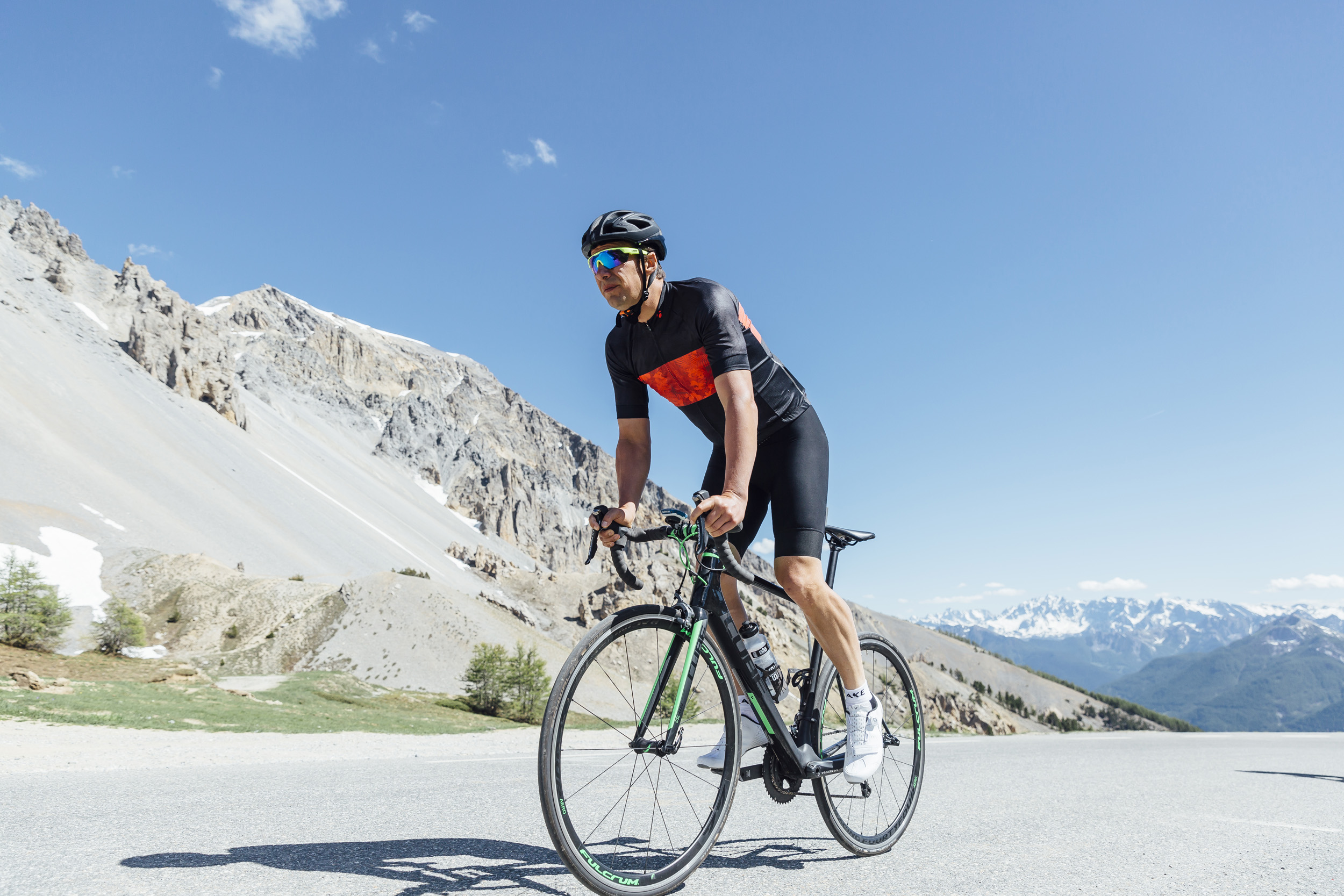
“Blood oxygen saturation level [SpO2] is the percentage of red blood cells that are carrying as much oxygen as they possibly can. At sea level, you get a pretty high percentage of oxygen into your lungs and blood — you’re well saturated, at 98 to 99 per cent. When there is less oxygen available, at altitude, your blood saturation drops to around 90 per cent at rest.”
This is the main reason why riding feels tougher at altitude — coping with reduced oxygen is just one more thing professional riders have to deal with.
“Pro riders are often pushing close to their limit, so having to deal with the effects of altitude can have a significant effect. You might assume that because these guys are some of the fittest in the world, they can deal with altitude, but it doesn’t work like that.”
Small window of benefit
Being fit doesn’t mean you’re better able to cope at altitude. The only way to improve your resistance to its effects is to stimulate adaptations that allow your body to use oxygen more efficiently.
For the pros, this means going to altitude training camps. Sports scientist Professor Louis Passfield explains that producing more red blood cells requires sustained exposure to altitude:
“The complete turnover of all the body’s blood cells takes about 120 days, but that doesn’t mean you have to be on an altitude camp for that long.”
Accruing adaptations takes considerable time, says Passfield.
“General wisdom suggests that two weeks is a reasonable length of time to gain a noticeable boost in your red blood cell count. Less than that and you probably won’t get a very noticeable or worthwhile boost.”
>>> How to prepare for an overseas cycling event
The timing of altitude camps is crucial too, as the gains begin to wear off after just a few days. Therefore, riders need to time their altitude training at just the right point before their target event.
“The increase in red blood cells only lasts for a couple of weeks. When you first get back from altitude, you have a limited window for exploiting the gains. It’s best not to compete for the first couple of days as you readjust to sea level; you then have a few days while the benefit is at its greatest.”
The effects then begin to wear off.
“You also have a longer-term window, another couple of weeks, during which the unwinding is happening, though your blood cell count is still enhanced. After that, the benefits are likely to have disappeared.”
This decreasing benefit often affects riders at the Tour de France. They feel the full effect during the first week of the race but by the time they reach the high mountains in the latter parts of the event, the benefits from their altitude camp may have worn off. Passfield believes some teams use artificial techniques to sustain the benefits for as long as possible.
“I doubt that many riders use altitude tents throughout the season, but some may do so after training camps to try to maintain the benefits before the high climbs of a race,” he says.
Finding the altitude sweet spot
There are different approaches to maximising the effects of altitude. Some experts believe it is best to live and train at altitude, while others believe in doing one or the other, living at altitude while training at sea level, or vice versa. There is as yet no scientific consensus.
One thing is for certain: altitude training isn’t a case of "the higher the better". In fact, going too high can be detrimental, reducing the quality of training and making it difficult to acclimatise. The aim is to find an altitude sweet spot, optimising the training effect without harming sleep quality or recovery.
“Places at around 1,500m above sea level are popular, as this is an altitude that works quite well for altitude camps. Boulder in Colorado [1,655m] is a good example,” explains Barber. “You can still train well without being impaired.”
Another ‘artificial’ method is using an altitude chamber. Barber explains that some athletes undertake intermittent chamber exposure: five minutes breathing low-oxygen air followed by five minutes breathing normal air. It is thought this can stimulate adaptations in the central nervous system, making the body more sensitive to low-oxygen conditions and thereby prompting greater cardiovascular efficiency.
>>> How Romain Bardet improved his climbing: team reveals vast altitude gains
As discussed, the body can adapt to altitude, but some bodies are naturally better at coping with reduced oxygen. Passfield explains that genetic factors play a part.
“The angiotensin-converting enzyme [ACE] regulates blood pressure and tends to be present in riders who respond well to endurance training and riding at altitude. Exactly what role this enzyme plays isn’t clear. You have 25,000-30,000 genes in your body, so for every one that does some good, there is probably another that undermines it. But there is a link between genetics and being able to ride well at altitude.”
Regardless of their genetics, most people get at least some benefit from spending time at altitude — though it can feel challenging at first.
“When you first train at altitude, the lack of oxygen can feel almost life-threatening!” says Passfield. “You just have to push through it and trust that your body will cope, because your immediate tendency is to back off and think you can’t do it.”
Pushing the ethical boundaries?
For amateur riders, altitude training is not always practical or affordable. This raises an ethical question: is it fair to use a form of training that some (perhaps most) of your rivals do not have access to? Of course, altitude training is not banned, so it is by no means a black-and-white issue. It should be noted, though, that in Italy all forms of artificial blood manipulation are banned — including altitude tents.
Passfield points out that there are many other factors that are unevenly distributed and that can confer selective advantages when it comes to sporting performance, from body size and shape, to coaching opportunities, to superior nutrition and equipment. It’s up to governing bodies, ideally in collaboration with athletes, to set appropriate rules.
“[The rules] come down to what is deemed acceptable by society,” says Passfield. “My concern is that athletes themselves aren’t put at the centre of the debate.”
>>> Can you blag your way around La Marmotte?
Is it worth it?
So, is altitude training worth it for amateur riders? It depends on your priorities and which method of altitude training you use. You need to weigh up the costs against the likely gains. Bear in mind that the costs of altitude training are not solely financial.
It takes time, including additional recovery and adaptation — time when you could have been doing your regular training. Can you be confident it will benefit you?
If you are heading abroad on a training camp to prepare for an upcoming event, then choosing to base yourself on a high mountain may be a smart choice, but altitude should not be your only or first consideration.
If you’re tempted to use an altitude tent, talk through with your coach whether it is likely to be worth the investment. Weighing up every aspect of altitude training is crucial to forming a judgement on whether a regular dose of thin air is truly right for you.
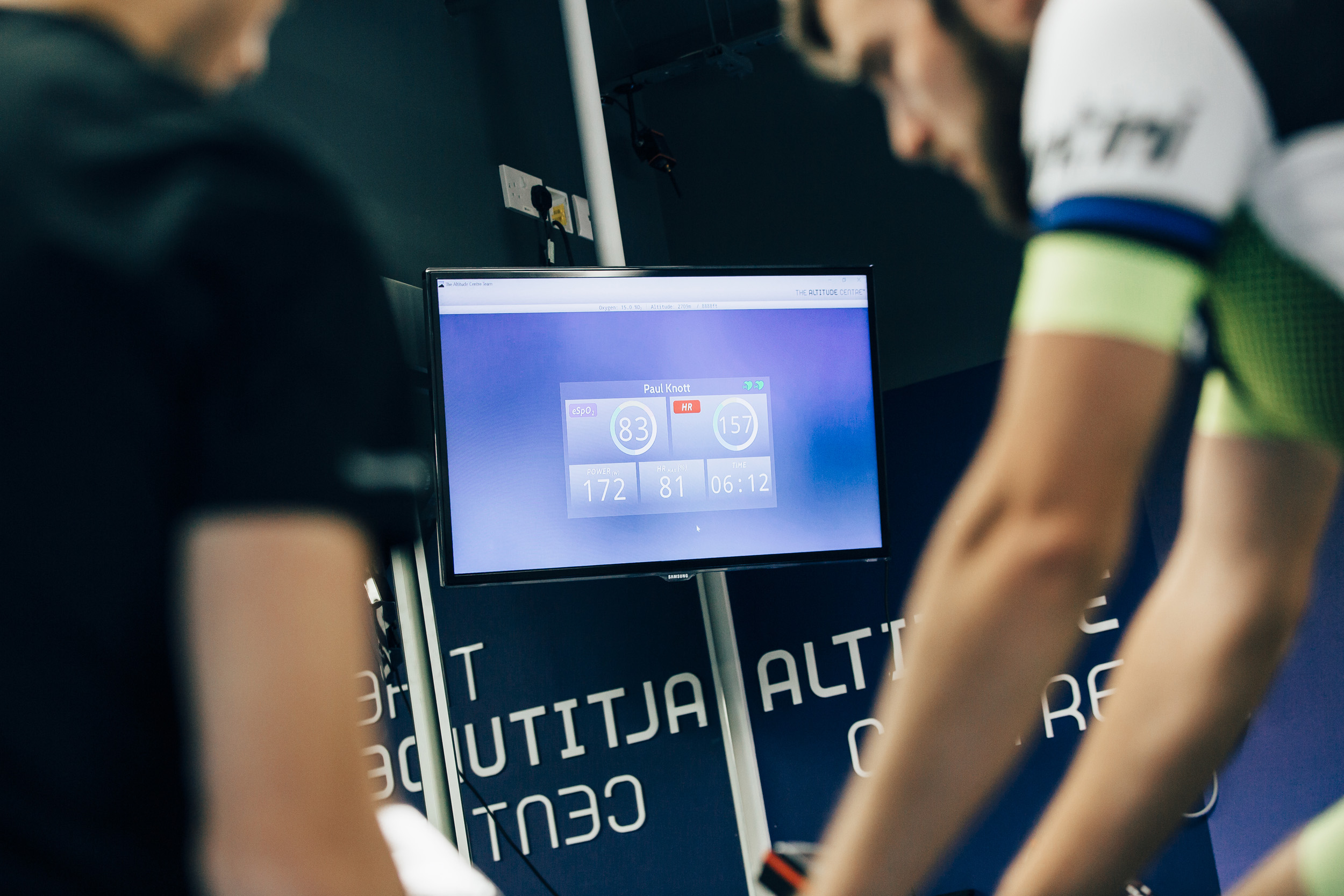
Sky’s limits: ‘Same stimulus, different responses’
Tim Kerrison Head of performance support at Team Sky, explains why the pros train at altitude
"Many of the critical moments in Grand Tours occur at moderate to high altitudes — on the cols of the Alps and Pyrenees, between 1,500 and 2,600m altitude. So performing to the best of one’s ability at these altitudes is critical.
"By spending time at these altitudes, the body acclimatises by adjusting and adapting to make optimal use of the lower oxygen availability. This process starts within days and continues over a two-week period while living at 2,000m altitude.
"At Team Sky, we tend to go to altitude for two-week blocks. Many riders do two of these camps before a Grand Tour, and some riders do shorter ‘top-ups’. In addition to the acclimatisation and adaptation effects, our altitude training camps tend to have a much broader purpose: to train hard in a focused environment, with a lot of climbing, specifically preparing for an upcoming big goal.
"We often also use these camps to heat-acclimatise, getting ready to perform in the high temperatures experienced in the summer races. Different people have different responses to the same stimulus.
"In the same way that some riders naturally perform better than others at altitude, some riders seem to benefit more than others from training at altitude — ‘responders’ and ‘non-responders’. Some riders experience altitude sickness at a much lower altitude than others, making any form of altitude training difficult."
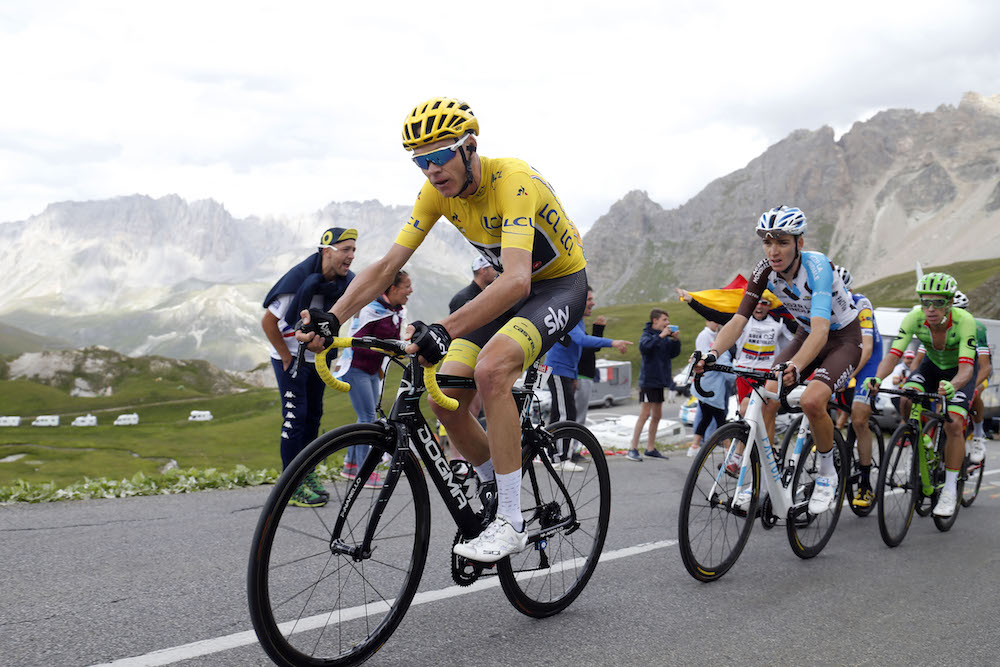
What difference does altitude make?
To assess how much altitude affects cycling performance, CW headed to the Altitude Centre in London.
We took part in two sub-maximal tests comprising two 12-minute ramp efforts at set cadences and power outputs, while heart rate and oxygen saturation (expressed as SpO2) were measured.
The first was conducted at sea level, the next at a simulated elevation of 2,700m with oxygen of 15 per cent.
“This level provides the right balance of being able to train while still getting the benefit from altitude,” James Barber explains. “If we set the altitude much higher, you wouldn’t be able train as effectively and so wouldn’t get much more benefit.”
Each individual responds differently to altitude, and measuring SpO2 alongside performance in one rider doesn’t tell the whole story. Our tester’s SpO2 value remained stable at around 95 per cent during sea-level testing, while at simulated altitude it had decreased to around 85 per cent by the end of the test.
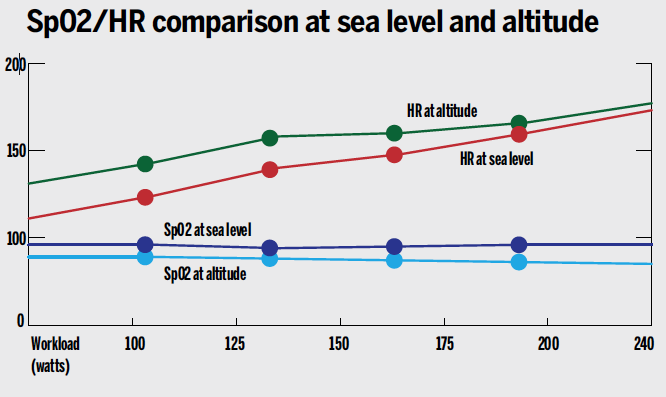
Bringing the altitude to you
Accessing the benefits of altitude training doesn’t necessitate travelling overseas to mountains. A number of alternatives are available…
Altitude tents
Pros: No need to adapt your training schedule or alter the intensity of each individual session, as an altitude tent is used while you sleep.
Cons: Can be disruptive to home life if you share a bed with a partner, and can affect the quality of your sleep, which may offset the potential benefits.
Price: £320-400 per month to rent
>>> Altitude Tent and Everest Summit Hypoxic Gerator
Altitude chambers
Pros: Ideal for acclimatisation training while at sea level. A modern chamber allows you to completely control the level of oxygen available, and you can monitor how your body reacts.
Cons: Only easily accessible to those based in major cities, and can prove costly if looking to complete multiple training sessions.
Price: £20-25 per session
Intake-restricting masks
NB: We’re talking here not about masks rigged up to hypoxic apparatus. No. We’re talking about so-called altitude masks that actually just limit air supply to the mouth and nose, making it harder to breathe.
Pros: Cheap; may help build diaphragm/lung strength.
Cons: Unscientific; do not simulate altitude; not true hypoxic training.
Price: £20-70

Thank you for reading 20 articles this month* Join now for unlimited access
Enjoy your first month for just £1 / $1 / €1
*Read 5 free articles per month without a subscription

Join now for unlimited access
Try first month for just £1 / $1 / €1
Paul Knott is a fitness and features writer, who has also presented Cycling Weekly videos as well as contributing to the print magazine as well as online articles. In 2020 he published his first book, The Official Tour de France Road Cycling Training Guide (Welbeck), a guide designed to help readers improve their cycling performance via cherrypicking from the strategies adopted by the pros.
-
 The thing that bothers me most when I look back at old school training is that right now we’re doing something equivalently misguided
The thing that bothers me most when I look back at old school training is that right now we’re doing something equivalently misguidedOur columnist's old training diaries reveal old-school levels of lunacy
By Michael Hutchinson Published
-
 Aero bikes with gravel wheels?: Six tech insights from Paris-Roubaix Femmes
Aero bikes with gravel wheels?: Six tech insights from Paris-Roubaix FemmesEverything we found out about tyre widths, self-inflating systems, and wheel choices from the cobbled Monument
By Tom Davidson Published